Journeying in Helgeland: what can we learn of small islands when creating post-pandemic futures of tourism?
By Tarja Salmela and Britt Kramvig
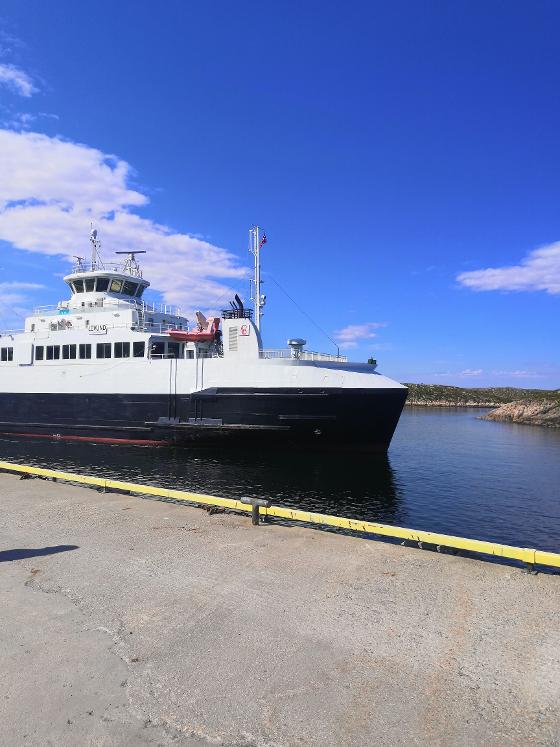
In June, we spent a week together in the region of Helgeland – located in Nordland County, on the West Coast of Norway. We set up to create understanding of the ways the small islands of the region are managing and preparing for the future during the third year of the COVID-19 pandemic. We were interested in what kinds of network of mobilities exist in the region that take part in the construction of tourism and travel experiences of domestic and international travelers. It was clear that instead of aiming to investigate post-covid realities and futures, we were to remain open for the processes of learning to live with the virus which keeps on being present in and entangled with our daily lives, as well as with the reality of businesses making their living out of tourism. Our personal relations to the region were different – Tarja visited the region for the first time whilst Britt had instead a long history in the region and in the island of Husøy. Our journey together was set to be an adventure, hoping that the islands, the sea, and their communities, communicate with us in ways that were not presumed nor forced.
Helgeland - also referred to as Norway in miniature size - consists of nineteen small municipalities, more than 12 000 islands and 9800 km of coastline, three national parks and the highest mountain in Northern Norway (1915 mod). Industry-wise the area is one of the biggest industrial environments in the country, characterized by the production and export of metal, fish, energy, gas, and oil. The infrastructure that supports mobility in the region is complex. The coast becomes mobile through a network of infrastructure consisting of high-speed passenger ferry services provided by the company Boreal. In addition, there are multiple fish plants and salmon farms that are dependent upon these infrastructural services to get fish out to the market. Nordland exported fish for 20 billion in 2021, having the highest index growth in the country. Seafood is exported out of the region while tourists are imported into the region.
Altogether, Helgeland is connected by sea-based mobilities (ferries, speed boats and private transports), forming a well-functioning transportation network, also for tourists. A well-functioning transportation system is an important part of Helgeland having become a growingly popular destination for domestic and international travelers. The region is well known of its beautiful nature, birds, and marine life. The presence of the sea with mountains looming at the horizon on mainland and on the islands forms a breathtaking contrast. The region is accessible by different forms of transportation: for the means of international tourism, Helgeland has four airports, railways, motorway E6 and one of its islands, Husæy in Træna, is on the course of Hurtigruten explorer cruise ships.
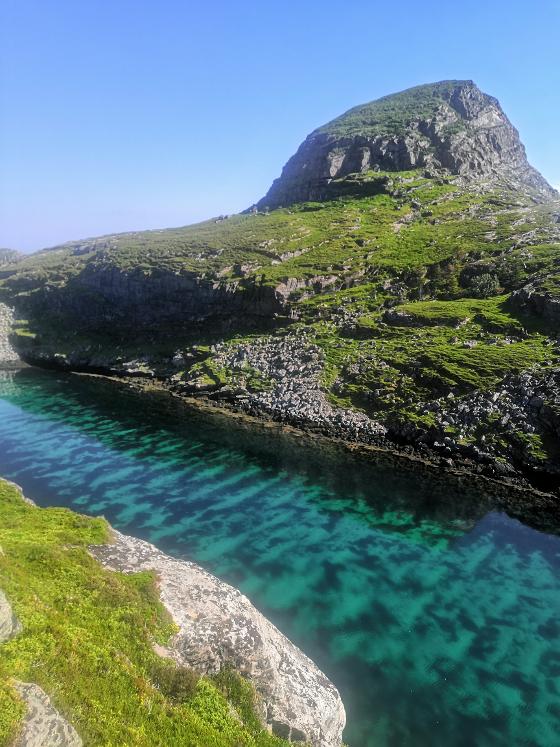
Helgeland experienced an increasing amount of interest among travelers during the first two years of the pandemic (1, 2). Based on our discussions with the tourism companies on the islands, the COVID-19 pandemic and restrictions of international travel provided the islands with record numbers of Norwegian visitors. The limited resources and small size of the islands provide exclusive experiences for visitors who find their way to their – often peripheral – destinations. As such, “limits” can become an asset for the small island communities.
The limits of the islands also affirm the meaning of connections between them. The practice of island hopping (øyhopping as we call it in Norwegian) between the islands, with the help of the well-functioning public transport system on the sea, has become a popular touristic practice in the region and is encouraged by the marketing initiatives of Visit Helgeland. The possibility to hop between the islands enables a longer stay in the region, contributing to socially as well as ecologically sustainable forms of tourism. As the main attraction on the islands might be a community café, a whisky distillery, or an art exhibition with a lunch opportunity, the visitors are invited to the lives of the local communities with a possibility for providing direct economic support to the local actors. The tourism activities might be small in size, but big in meaning.
This becomes ever more important as Helgeland is at the same time a bundle of small coastal communities who have been witnessing migration from the periphery of the coast to the inland since the aftermath of the second world war. This is connected to the strong industrial development in the inland and simultaneous decrease of primary industries, such as agriculture, forestry, and fishing, on the coast. Some of the island communities have lost their numbers of permanent inhabitants and faced periods without much hope for the future. Yet, many of the coastal communities also flourish due to the revival of traditional livelihoods such as fishing or innovative solutions for community revival, such as is the case for the fishing community of Myken.
«Myken er samfunnet som går mot strømmen, og beviser at det fremdeles kan være liv laga i bygder som ellers avfolkes og forsvinner. Nord for polarsirkelen, og så langt ute i havet at man ikke engang skimter Hurtigruten når den passerer inne i fjæresteinene, og 40 min med hurtigbåt fra nærmeste nabo, vokser både befolkningen og optimismen.
Et populært destilleri, overnatting i spesielle steder, og to utmerkede spiseplasser i sommersesongen har gjort Myken populært.
Den eksotiske og litt utilgjengelige plasseringen gjør allikevel at det aldri blir for fullt – hit ut er det bare de aller mest interesserte som kommer. Her nyter man flotte kunstutstillinger med både lokale og nasjonalt kjente kunstnere, og konserter med utmerkede artister.» (Myken.no)
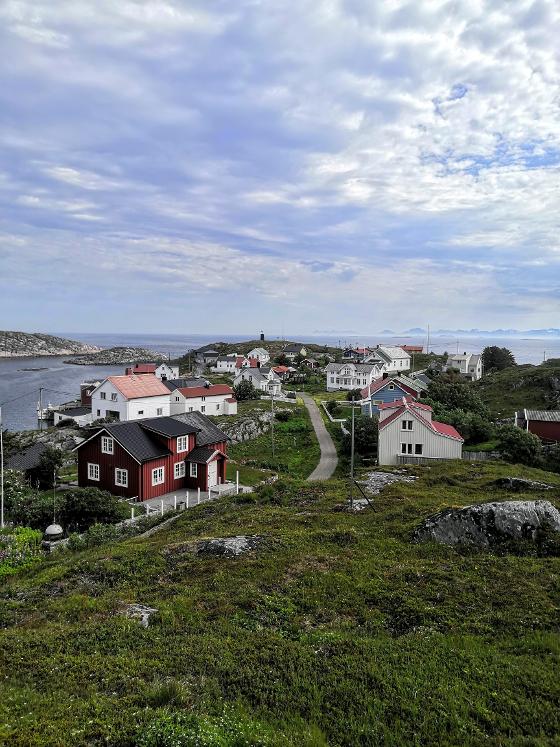
In 1981, a tragedy on the sea hit the community of the island of Myken with force. A fishing boat Western sank, leading to seven men dying in the fatal accident, six of them being from Myken. Five years later, the island’s fish farm burned down. The several hundred years long history of the coastal community seemed to be over, in line with many other fishing villages along the coast. The shop closed down, the school closed, and it seemed evident that the community will be forced to move out from the island. However, a man called Bjærn Skauge thought differently. An earlier booking chef from Braathens Safe who came to Myken from Oslo started a company called Myken Elektronikk, employing the women on the island. The soldering of circuit boards to computers and the precious work of women of Myken brought income to the island for several years, and another project was set up to start: the restoring and refurbishing of the wooden houses on the islands. Tourism, art, concerts, food and even gin became objects of investments in order to create new possibilities for a more vivid future for Myken. One after another, the houses got new lives - and the people a new chance to have trust in the future. (3, 4.)
These houses were the ones we took pictures of during our two-night visit on the island. These were the houses we sensed talking to us a revived history – a history of care and commitment. These were the houses that made the island appear inhabited, even when many lived on the island only for short periods of time. For us, the seemingly still houses started to travel. They traveled in families, through generations, and as they traveled, they started to create memories for the island visitors like us. They were an important in the creation of place, together with the community and the tourism company whose restaurant or lounge – located in an old school – worked as a living room for the community. It was there, in the premises of an old school that had turned into a fresh, innovative yet calming and grounding place for making connections to oneself and others, where we sat late to the night and talked to the crew of the local speedboat taking us to the island the day before. At Myken Seng og Suppe they have managed to create a space where both guests and inhabitants of the island come together and feel at ease with each other’s presence. They sit around the same table discussing politics or life, drinking coffee together outside, enjoying the sounds of the sea. This is co-becoming that happens through listening to the sea, and each other’s stories. Stories travel. Stories get born. Indeed, places, themselves, start to travel (5, p. 214).
Furthermore, it is in these meeting points where we became – even for a short amount of time – part of a process of material co-becoming of the islands. In islands such as these, the sea, people, birds, houses, rocks, and weather all become together – each and every one of them being an essential component in the birth and existence of the other. The life that is so deeply entangled in more-than-human worlds sets out a challenge to tourism: a challenge to start undressing its anthropo-capitalo-centric clothes. Tourism would be nothing in these islands without the respect for and knowledge of the sea and the weather. The skillful communication between the sea, weather, seafarers, and the transport networks only work according to the conditions of the sea and weather. When there’s a storm – the local speedboat crew told us over a pint – ”there’s no boat going to Myken”. The island is not protected by other islands to stop the wind blowing, creating big waves that make even the most skillful boat crew and best boats turn back or - better so - never leave the harbor. In rough weathers, the community of Myken can stay on the island for two weeks without supplies. It teaches resilience.
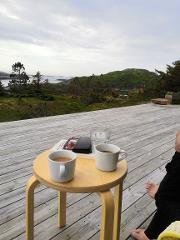

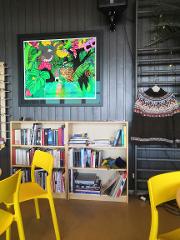 What Helgeland, its coastal communities, and mobility networks taught us is that tourism and travel cannot be considered as separate from the mundanity of life, from the creativity and innovativeness that keep these communities alive. The knowledge that we gained from the naturalness and necessity of mobility – including that of people in the web of more-than-human materialities – in and between these islands, in the past and now in the present, points to the importance of thinking of the futures of travel as a challenge to our assumptions of fixity as an ideal and representative of ‘normality’. To be committed to a place and its future, as is the case with Bjørn Skauge in Myken with his passion to take part in the creation of a future in the island, does not mean being bound to a fixed position in the world.
What Helgeland, its coastal communities, and mobility networks taught us is that tourism and travel cannot be considered as separate from the mundanity of life, from the creativity and innovativeness that keep these communities alive. The knowledge that we gained from the naturalness and necessity of mobility – including that of people in the web of more-than-human materialities – in and between these islands, in the past and now in the present, points to the importance of thinking of the futures of travel as a challenge to our assumptions of fixity as an ideal and representative of ‘normality’. To be committed to a place and its future, as is the case with Bjørn Skauge in Myken with his passion to take part in the creation of a future in the island, does not mean being bound to a fixed position in the world.
References:
1) Ranablad.no (2021) Norske turister strømmet til Helgeland på norgesferie. https://www.ranablad.no/norske-turister-strommet-til-helgeland-pa-norgesferie-na-danker-regionen-ut-lofoten-det-har-vart-en-narmest-absurd-okning/s/5-42-891267, last visited 21.2.22
2) Helg (2020) Reiselivsnæringen på Helgeland er inne i sin beste periode. https://www.helg.no/reiselivsnaringen-pa-helgeland-er-inne-i-sin-beste-periode-noensinne-en-forsmak-pa-hva-regionen-kan-oppna/s/5-24-571195, last visited 21.2.22
3) Johansen, B.H. (2019) Slik ble Myken et paradis for mat- og whiskyelskere. NRK, 10.2.2019, https://www.nrk.no/nordland/xl/slik-ble-magiske-myken-et-paradis-for-mat--og-whiskyelskere-1.14315973, last visited 22.8.2022.
4) Conversations with the local community of Myken, summer 2022
5) Sheller, M. & Urry, J. (2006) The new mobilities paradigm. Environment and Planning A, 38, pp. 207-226
6) Ahmed, Sara; Castaneda, Claudia; Fortier, Anne Marie; Sheller, Mimi (ed.) (2003): Uprootings/regroundings. Questions of home and migration. Oxford: Berg